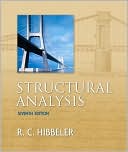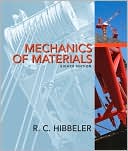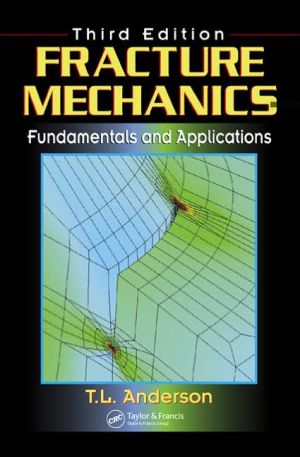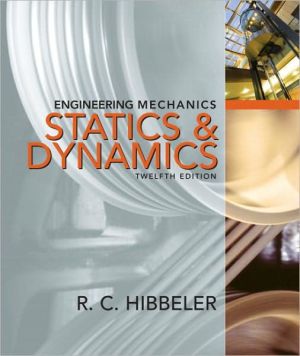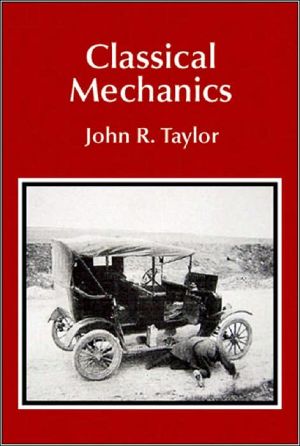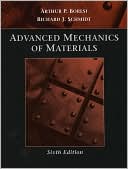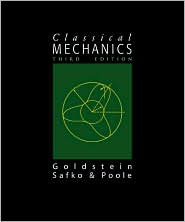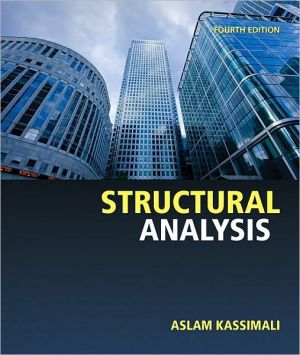Mechanical Measurements
In the field of mechanical measurements, Mechanical Measurements continues to set the standard. With an emphasis on precision and clarity, the authors have consistently crafted a text that has helped thousands of students grasp the fundamentals of the field. Mechanical Measurements 6th edition gives students a methodical, well thought-out presentation that covers fundamental issues common to all areas of measurement in Part One, followed by individual chapters on applied areas of measurement...
Search in google:
In the field of mechanical measurements, Mechanical Measurements continues to set the standard. With an emphasis on precision and clarity, the authors have consistently crafted a text that has helped thousands of students grasp the fundamentals of the field. Mechanical Measurements 6th edition gives students a methodical, well thought-out presentation that covers fundamental issues common to all areas of measurement in Part One, followed by individual chapters on applied areas of measurement in Part Two. This modular format fits several different course formats and accommodates a wide variety of skill levels. Booknews From the preface to the first edition (1961): "Measurement and the correct interpretation thereof are necessary parts of any engineering research and development program....It is the primary purpose of this book to supply a basis for such measurements." For the present edition a new co-author, John H. Lienhard, has been added, and more than half the chapters have been substantially revised. Annotation c. Book News, Inc., Portland, OR (booknews.com)
PREFACE:\ \ After more than 30 years, the basic purpose of this book can still be expressed by the following three paragraphs extracted from the Preface of the first edition of Mechanical Measurements, published in 1961.\ Experimental development has become a very important aspect of mechanical design procedure. In years past the necessity for "ironing out the bugs" was looked upon as an unfortunate turn of events, casting serious doubts on the abilities of a design staff. With the ever-increasing complexity and speed of machinery, a changed design philosophy has been forced on both the engineering profession and industrial management alike. An experimental development period is now looked upon, not as a problem to avoid, but as an integral phase of the whole design procedure. Evidence supporting this contention is provided by the continuing growth of research and development companies, subsidiaries, teams, and armed services R & D programs.\ At the same time, it should not be construed that the experimental development (design) approach reduces the responsibilities attending the preliminary planning phases of a new device or process. In fact, knowledge gained through experimental programs continually strengthens and supports the theoretical phases of design.\ Measurement and the correct interpretation thereof are necessary parts of any engineering research and development program. Naturally, the measurements must supply reliable information and their meanings must be correctly comprehended and interpreted. It is the primary purpose of this book to supply a basis for such measurement.\ With the fifth edition of Mechanical Measurementsconsiderable changes and improvements have occurred. Foremost a new co-author, Dr. John H. Lienhard, has been added. In addition, more than half of the chapters in the book have been substantially revised. Some specific changes are as follows:\ \ The uncertainty material in Chapter 3 has been fully revised and follows the ASME standards.\ New material on discrete sampling and discrete Fourier transforms has been added in Chapter 4 and also in Chapter 8.\ New material on semiconductor sensors has been added in Chapter 6 and also in Chapter 16.\ The sections on filters and op-amps in Chapter 7 have been revised and updated.\ Laser-based velocity and displacement measurement has been introduced in Chapter 15 and also in Chapters 11 and 17.\ New material on sound intensity and noise measurement has been added in Chapter 18.\ Recent changes in measurement standards are incorporated in Chapter 2.\ The remainder of the material has been substantially updated, and approximately 40 percent of the problems have been replaced or revised.\ \ The authors do not suggest that the sequence of materials as presented need be strictly adhered to. Wide flexibility of course contents should be possible, with text assignments tailored to fit a variety of basic requirements or intents. For example, the authors have found that, if desired, Chapters 1 and 2 can simply be made a reading assignment. Greater or lesser emphasis may be placed on certain chapters as the instructor wishes. Should a course consist of a lecture/recitation section plus a laboratory, available laboratory equipment may also dictate areas to be emphasized. Quite generally, as a text, the book can easily accommodate a two-semester sequence.\ \ Acknowledgments\ \ The authors would like to thank Senior Editor Eileen Bernadette Moran, Editorial Assistant Dana Goldberg, and the entire staff at Addison-Wesley for their energetic assistance in assembling the fifth edition. Roy Marangoni would like to express his gratitude to Dr. Joel E. Peterson for the material on digital counters and digital recording, which was adapted from his lecture and laboratory notes at the University of Pittsburgh.\ John Lienhard would like to express his gratitude to Thomas Beckwith and Roy Marangoni for inviting his participation in this book--it is a great pleasure to work with you both. Making an adequate contribution to this already outstanding book has been an exceptional challenge. Thanks also go to my mentors in measurement: Millard F. Beatty, Charles W. Van Atta, Kenneth N. Helland, Jon Haugdahl, Frank A. McClintock, C. Forbes Dewey, and Ernest Rabinowicz. I would like to thank Lucille Blake for her help in preparing and handling the manuscript. Finally, I would like to thank David N. Wormley and the Department of Mechanical Engineering for supporting me in this undertaking, and I would like to acknowledge summer support from the Bernard M. Gordon Engineering Curriculum Development Fund.\
IFundamentals of Mechanical Measurement11The Process of Measurement: An Overview32Standards and Dimensional Units of Measurement213Assessing and Presenting Experimental Data454The Analog Measurand: Time-Dependent Characteristics1275The Response of Measuring Systems1636Sensors2117Signal Conditioning2598Digital Techniques in Mechanical Measurements3279Readout and Data Processing375IIApplied Mechanical Measurements41110Determination of Count, Events per Unit Time, and Time Interval41311Displacement and Dimensional Measurement43512Strain and Stress: Measurement and Analysis47913Measurement of Force and Torque53714Measurement of Pressure57115Measurement of Fluid Flow61116Temperature Measurements65917Measurement of Motion73118Acoustical Measurements781App. A: Standards and Conversion Equations817App. B: Theoretical Basis for Fourier Analysis821App. C: Number Systems827App. D: Some Useful Data833App. E: Stress and Strain Relationships837App. F: Pseudorandom Normally Distributed Numbers853App. G: Statistical Tests of Least-Squares Fits857Answers to Selected Problems863Index867
\ BooknewsFrom the preface to the first edition (1961): "Measurement and the correct interpretation thereof are necessary parts of any engineering research and development program....It is the primary purpose of this book to supply a basis for such measurements." For the present edition a new co-author, John H. Lienhard, has been added, and more than half the chapters have been substantially revised. Annotation c. Book News, Inc., Portland, OR (booknews.com)\ \

